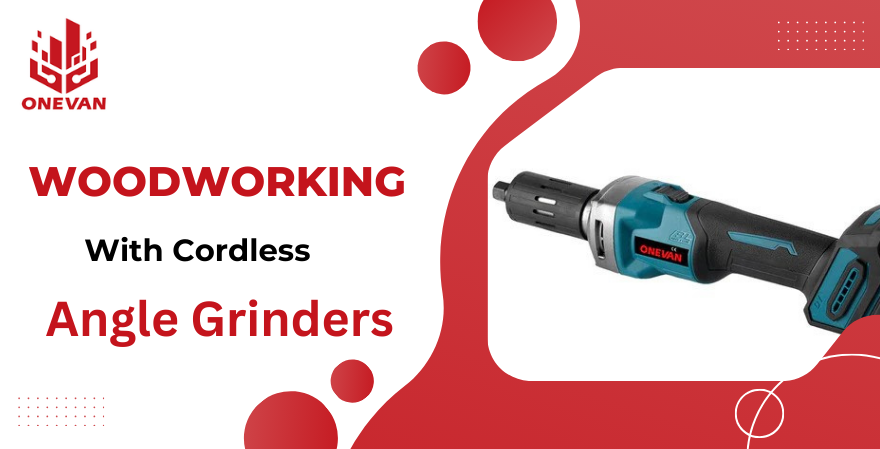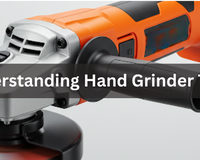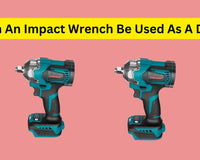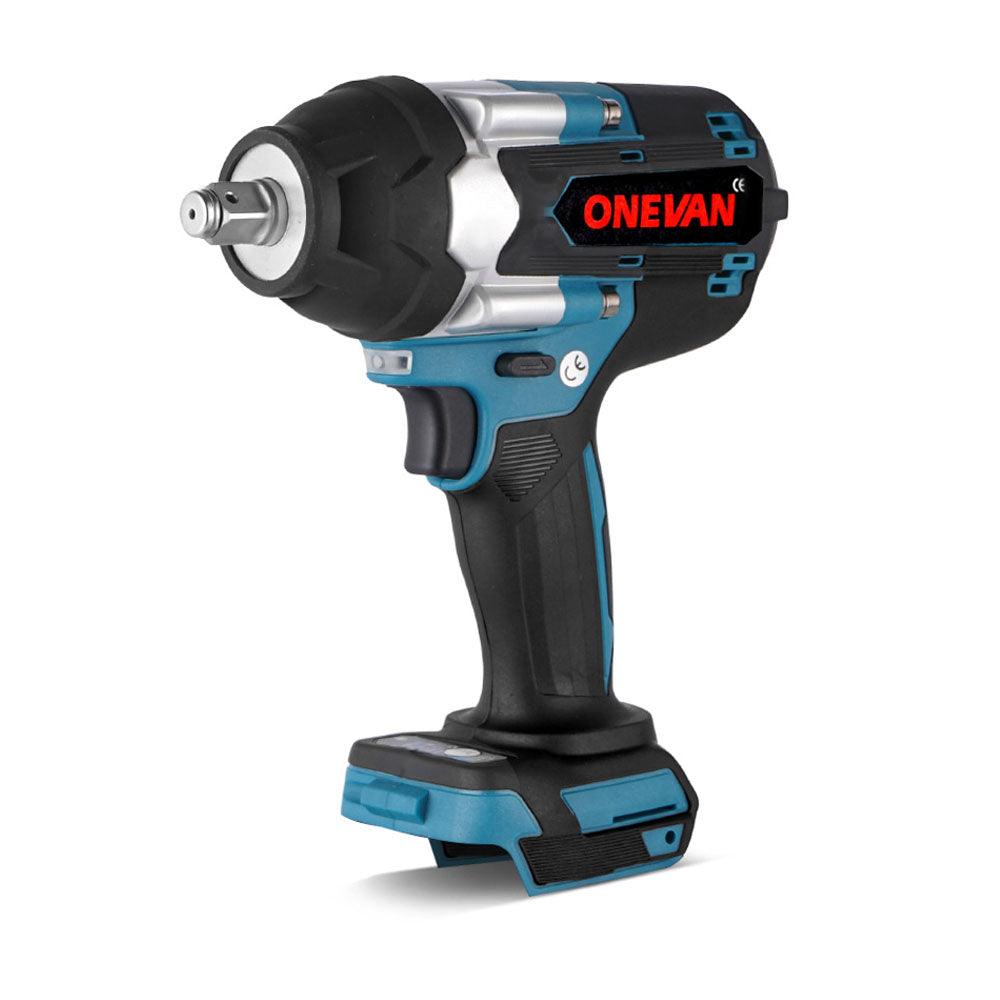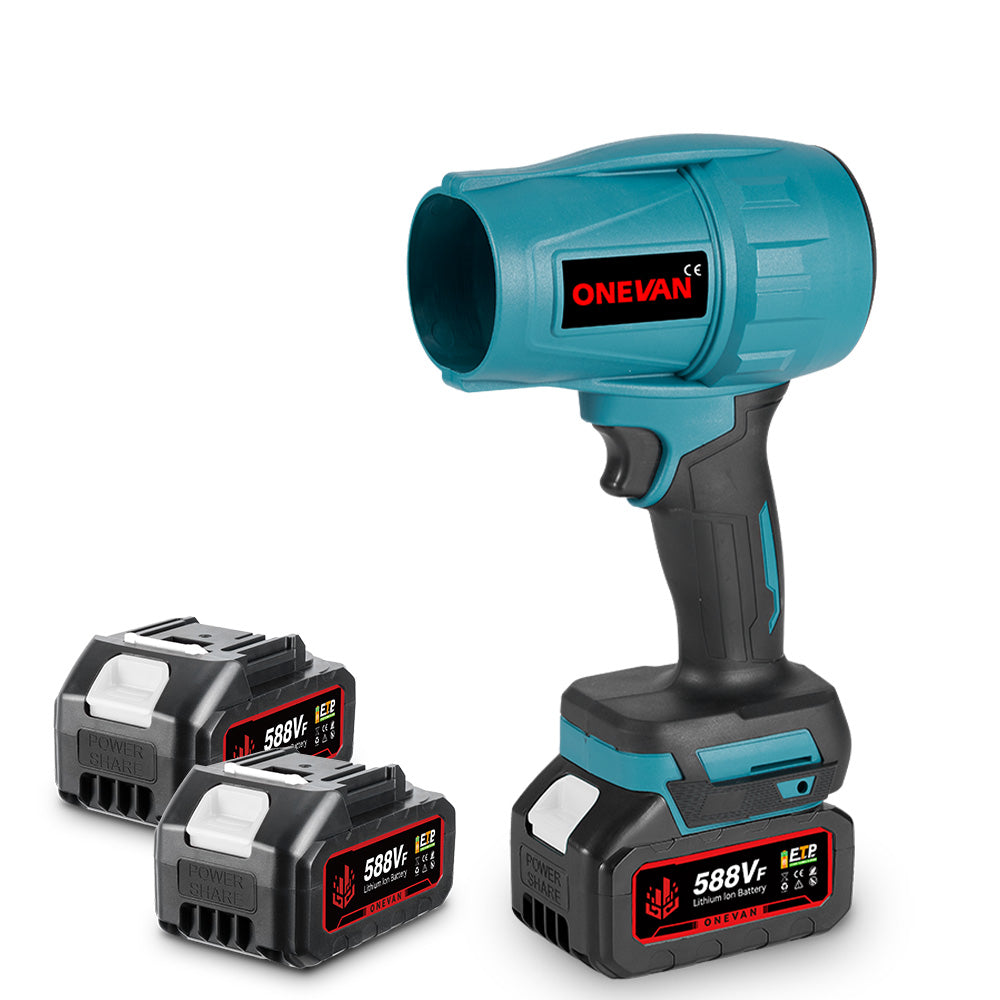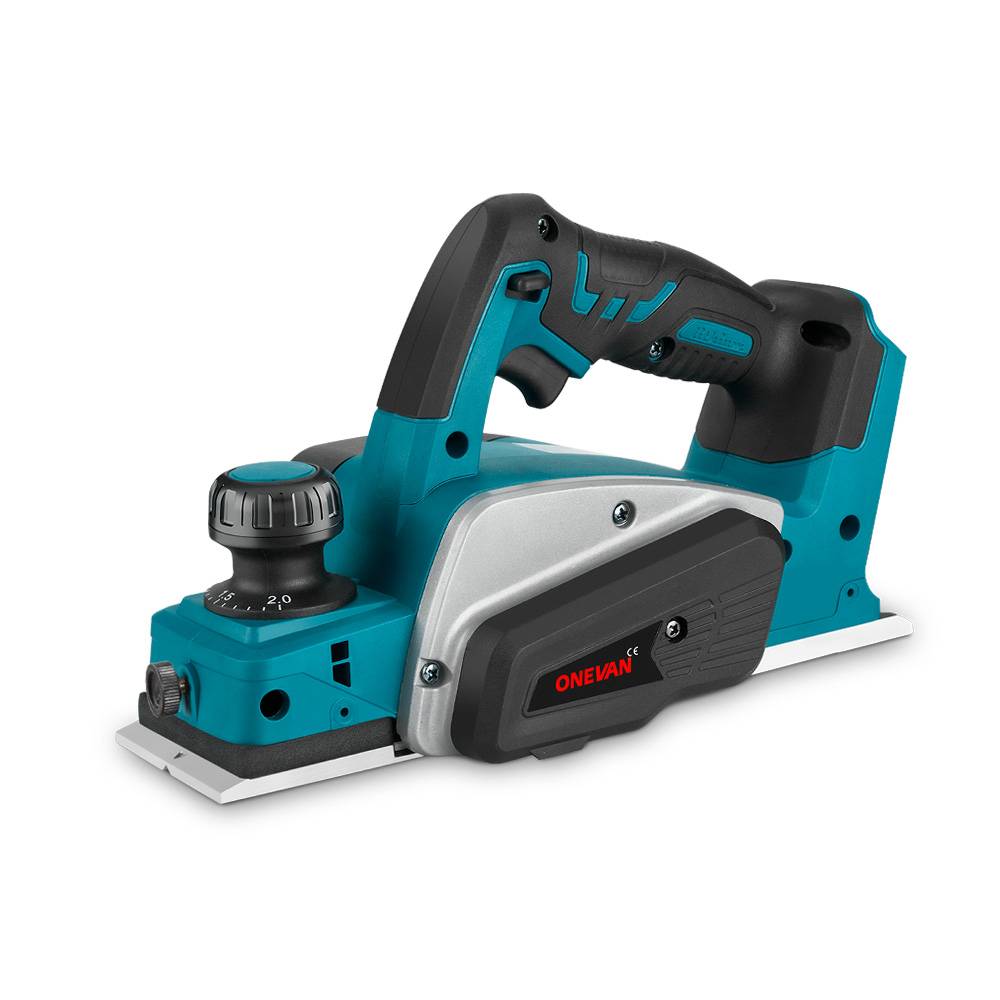1. Introduction
The woodworking industry is constantly developing in terms of new tools to cut and build wood objects. Although, saws have a fair proportion as wood cutter machines like cordless angle grinders are making their way to innovation. With robust and powerful operation features, angle grinders are highly effective in cutting wood. Generally, these grinders are used for masonry and metalworking tasks, but their application in woodworking tasks is exceptional.
For example, it is very easy to use different discs with angle grinders for woodworking. These discs are available in different sizes and tooth configurations to handle tasks such as:
Similarly, hobbyists and woodworking professionals are looking for alternative tools. This phenomenon is fueled by several factors:
In this article, we are going to learn how beginners can cut wood using cordless angle grinders. Since this technology is overwhelming, DIY woodworking enthusiasts are exploring new techniques to cut and build objects. But, how to use these grinders to cut wood precisely?
2. Understanding Cordless Angle Grinders
Cordless angle grinders are one of the latest innovations in power tools. Since it is apparent from the name, these power tools operate with rechargeable batteries. They have a small motor (depending on the model) with a rotating spindle. It can be equipped with different discs following the nature of the task.
Let’s take a deeper look to overview its features for woodworking:
2.1 What Are Cordless Angle Grinders?

Cordless angle grinders operate on rechargeable batteries. It’s one of the dominating features that removes the barrier of the power cord and delivers several advantages:
We can use cordless metal grinders in woodworking by attaching a range of different discs for fine woodcuts. We shall describe each in later sections.
Technical Specifications:
While specific features can vary between brands and models, here's a general overview of key technical specifications to consider when choosing a cordless angle grinder for woodworking:
| Feature | Description |
| Disc Diameter | The diameter of the cutting disc (typically 4.5" or 5") |
| No-Load Speed | The rotational speed of the disc (usually between 8,000 and 10,000 RPM) |
| Battery Voltage | The voltage of the battery (common options are 18V and 20V) |
| Spindle Lock | Amp-hours (Ah) of the battery, impacting runtime (higher Ah = longer runtime) |
| Dust Protection | Some models offer features to minimize dust intake |
Comparative Data of Cordless Angle Grinders:
| Feature | ( 1) ONEVAN 6mm 2000W Electric Die Grinder | (2) ONEVAN 125mm Electric Grinder | (3) ONEVAN 12V 500W Mini Angle Grinder |
| Type | Battery operated Die Grinder, | Angle Grinder | Micro Angle Grinder |
| Max Power | 2000W | 2000W | 500W |
| Motor | Brushless | Brushless | Brushless |
| No-Load Speed | 0-35,000 RPM | 3,000-20,000 RPM | 19,500 RPM |
| Disc Diameter | N/A (Uses grinding wheels) | 5" (125mm) | N/A (Uses shaping disc) |
| Collet/Arbor | 6mm or 6.35mm | 22.23mm (7/8") | 10mm |
| Variable Speed | Yes (4 Speeds) | Yes (6 Gears) | No |
| Battery Compatibility | Makita 18V (Optional) | Not Specified (Optional) | 12V 2000mAh (Optional) |
| Applications | Stone/Metal/Wood (Cutting, Polishing) | Metal (Cutting, Polishing) | Wood/Non-Metal (Shaping) |
Choosing the Right Grinder:
2.2 Versatility of Cordless Angle Grinders
Advance developments in technology have made power tools even handier especially the size. This also applies to cordless angle grinders. Our ONEVAN is the leading manufacturers of cordless power tools. Thanks to this, cordless angle grinders have the same power as traditional equipment powered directly from an electrical socket.
The cordless grinders with battery are versatile due to the following factors:
3. The Feasibility of Cutting Wood
Cordless angle grinders are making their way in the wood-cutting industry. Since these power tools are convenient to operate, they deliver some significant advantages compared to corded angle grinders. We shall review its feasibility, advantages, limitations, and some safety considerations with a critical analysis of the available research.
3.1 Theoretical Possibilities: Can Cordless Angle Grinders Cut Wood?

Cordless angle grinders come with powerful motors which enable spin cuts at high speed. This feature allows them to sever wood fibers. Since dedicated saws have limited blade options, they remain incompetent when it comes to the versatility of interchangeable discs.
Right angle die grinder electric outperform traditional saws in various aspects such as rough and fat cuts in thick lumber, and precision cuts with flush-cut discs.
Furthermore, the compact size of angle grinders makes them extremely maneuverable which is extremely effective for working in closed spaces and complex objects. This feature makes them ideal for outdoor woodworking applications.
Yes, there are some limitations also. For instance, cordless angle grinders generate extra dust which can make the environment messy. Simultaneously, operating these powerful grinders requires skill. Finally, the angle grinder operator should ensure some safety precautions such as dust mask, and eye protection to minimize potential health risks.
3.2 Practical Considerations for Woodworking
Most people consider an angle grinder only for cutting and grinding metal. In some cases, however, it can be used very well for woodworking - especially when we do not need high accuracy and do not want to spend extra money on an eccentric sander.
The performance of a cordless angle grinder significantly depends on the type of cut you want on any wood. For this purpose, professionals and hobbyists incorporate a variety of discs following the job nature.
For example, a coarse disc with tungsten carbide is suitable for removing large amounts of material quickly. For finer sanding and smoothing out curves, a flap disc with multiple sandpaper is highly recommended. Subsequently, to sand a large flat surface, you need a hook and loop sanding disc.
Here's a breakdown of the decisive factors to consider making different cuts:
3.3 Types of Cuts with Angled Grinders Woodworking:

Straight Cuts: Cordless angle grinders effectively handle straight cuts. These cuts can be used for either lumber cutting or clear cuts using powerful motors.
Curved Cuts: Angle grinders are not suitable for complex curved cuts.
Nature of Wood:
Hardwood: Cordless angle grinders can precisely cut hardwood like maple or oak. These machines can easily rip through the thick woods by making precise cuts.
4. Safety Concerns and Precautions for Cutting Wood
Cordless angle grinders are incredibly powerful tools that feature new directions for woodworking tasks. However, there are some safety precautions and potential dangers to review for a safe woodworking experience.
Identifying Potential Risks:
According to the National Institute for Occupational Safety and Health (NIOSH), there are nearly 24,000 estimated emergency visits in the US due to angle grinders’ injuries.
Major safety concerns when using cordless angle grinders for woodworking:
Implementing Essential Safety Measures:
Working with angle die grinder electric is safe provided that appropriate health and safety measures are used. One should carry woodworking activities using cordless angle grinders in appropriate protective clothing - primarily gloves and safety glasses, as well as hearing protection.
However, before we start working, we must carefully check the tool itself and the accessories: the general technical condition of the device, the disc, and the cover. Cutting or grinding discs must not have cracks or nicks.
Here are major safety tips you must ensure while using an angle grinder for woodworking:
5. Choosing the Right Blade for Cutting Wood

Since cordless angle grinders feature different discs following the requirement, it is critical to choose the right blade for fine woodcuts. The selection of the wrong blade will impact both quality and safety.
5.1 Understanding Blade Types for Wood Cutting
Angle grinder discs are designed for grinding, cutting, and polishing metal, wood, concrete, stone, or ceramics. Most discs are tailored to specific applications. We look at several parameters before choosing the right blasé types for woodworking:
Woodcutting Discs
Angle grinders’ blades vary in the density of their teeth. The more teeth the blade disc has, the more precise the work and the smoother the surface. Blades with a small number of teeth prepare the initial finish. They are used rather for rough grinding. Discs with more teeth prepare a higher surface. A large number of densely located teeth constitute the final finish - intended for finishing and polishing the surface.
Types of blades for angle grinders
Raps can be divided into groups:
Straight blades for angle grinders
Straight-blade discs look like grinding discs with serrated edges. Straight blades for angle grinders are used for milling, grinding, and removing old paint coatings.
Angled blades
Angled-blade discs are more practical than straight-blade discs. Moreover, they are quite easy to operate and also deliver extreme maneuverability.
Recessed blades
Recessed blades are designed for more precise work. Thanks to the recessed nut, they enable precise work over the entire surface. This ensures greater operational efficiency.
Milling cutters
A blade cutter is an excellent choice for milling wood. Additionally, the blade disc of the milling type allows for grooving in wood, rubber, plastics, or gauze concrete.
5.2 How to select the best blade for angle grinder woodworking?
When choosing the best blade for a cordless angle grinder in woodworking, we need to undertake some important factors.
Type of Cut:
6. Step-by-Step Guide for Cutting Wood
Working with an angle grinder seems like a simple task. However, when using this tool, it is easy to make a crooked cut due to lack of experience. Therefore, for a comprehensive output and safety, we need to follow some guidelines.
6.1 Preparation: Setting Up for Success
The woodworking space should be properly secured and cleaned. A workshop with a work table on which the material to be processed can be placed stably is ideal. If we do not have much space, it is worth taking care of a bit more surface area. Similarly, it is highly recommended to remove flammable materials.
Before turning on the cordless angle grinder, you should check the following points:
6.2 The Cutting Process: Techniques and Tips
How to cut wood with a battery operated angle grinder correctly? You should follow several generally accepted rules. First of all, when using the tool, you must hold it with both hands - one hand on the side handle and the other on the body. This makes the flex stable and even when operating at high speeds; it should not jump out of our hands.
The grinder should be held so that the disc is perpendicular to the material. However, you should position it so that it is on the side of the cover. This will increase safety and allow for a better view of the cut. As the operator of the tool, you should also not apply too much pressure to it.
Is cutting wood with an angle grinder a good solution? The answer depends on the thickness and hardness of the material and the expected effect. In theory, flex can handle any type of wood if you use a properly selected disc (preferably universal). The thin piece can then be cut with an angle grinder without any problem.
Problems arise, however, with larger and thicker pieces. Then, even using a wide disc may cause big problems and require making many cuts from different sides of the piece being cut. It is then recommended to use dedicated tools, such as table saws.
6.3 Finishing Touches: After the Cut
Although cordless angle grinders for woodworking perform an excellent job an additional post-cut finishing needs some additional steps. We have listed each below.
Smoothing the Cut:
Woodworking with angle grinders leaves a rough surface compared to saws. For a smooth surface, the sanding technique is highly effective. You can start with a coarse grit sandpaper to eliminate surface imperfections. A hand planer is also used for smoothing a wood-cut surface.
Reducing Tear-Out:
In case you have ripped out the fibers from the wood edge due to the severe pressure of the angle grinder, it is highly recommended to use a sharp blade for clearing the cuts. You can also score a line along with the cut to ensure a tight woodcut.
7. Tips for Effective and Safe Use for Cutting Wood
When working with an angle grinder, remember basic safety rules. Wear appropriate protective equipment such as safety glasses and gloves. It is also important to avoid contact with rotating parts of the tool and maintain an appropriate distance from other people.
7.1 Tips for Efficient Cutting
1. Attach the appropriate grinding disc to the angle grinder. Choose a disc with the appropriate grit.
2. Make sure the wood is properly prepared. Remove any nails, screws, or other items that may damage the sanding disc.
3. Wear appropriate protective equipment, such as safety glasses, a dust mask, and gloves.
4. Hold the angle grinder with both hands, keeping it firm and steady.
5. Gently place the sanding disc on the wood and turn on the sander.
6. Move the sander over the wood surface using even longitudinal movements. Avoid applying too much pressure to avoid excessive abrasion of the wood.
7. Continue sanding until you achieve the desired effect. Remember not to stay in one place for too long to avoid overheating the wood.
8. Once you have finished sanding, turn off the angle grinder and put it away in a safe place.
7.2 Avoiding Common Mistakes in Woodworking with Angle Grinders

Read the following table of the most common mistakes and their prevention tips in woodworking with cordless angle grinders.
| Mistake | Potential Consequence | Prevention Tips |
| Using the wrong disc | Rough cuts, and kickbacks | Select a woodcutting disc with the appropriate tooth configuration |
| Improper grip | Inaccurate cuts, and risks of accidents | Maintain a firm grip. Practice controlled cutting motions. |
| Forcing the cut | Binding, and kickback | Avoid pushing the grinder too hard |
| Neglecting safety measures | Eye injuries, and hearing problems | Always wear safety glasses, and ensure hearing protection |
| Cutting thick e hardwoods | Rough cuts | Use a table saw for thicker hardwoods. |
8. Conclusion
While angle grinders are majorly used for metalworking their application in woodworking is also getting massive appreciation. Professionals and hobbyists are considering angle grinders are excellent alternatives to traditional woodworking tools. Although these power tools provide extra mile-cutting capabilities and advantages there are some limitations also.
9. FAQs
Q1: Can angle grinders be safely used for cutting wood?
Yes, angle grinders can be used to cut wood safely, but it requires the right type of blade and proper safety precautions. Using a blade designed for wood and wearing protective gear are crucial steps.
Q2: What type of blade should I use with an angle grinder for cutting wood?
For cutting wood with an angle grinder, use a carbide-tipped wood cutting wheel or a chainsaw disc. Ensure the blade is compatible with your grinder's size and speed specifications.
Q3: What are the safety precautions I should take when using an angle grinder on wood?
Wear protective gear including goggles, gloves, and ear protection. Ensure the workpiece is securely clamped. Keep the work area clear of flammable materials, and always be aware of the potential for kickback.
Q4: Can I make precision cuts with an angle grinder in wood?
While angle grinders are more known for their power and speed, with the right blade and a steady hand, you can achieve relatively precise cuts. However, for intricate woodworking, more precise tools might be preferable.
Q5: How do I minimize burning the wood when cutting with an angle grinder?
To minimize burning, use a sharp blade and maintain a steady, moderate speed. Don’t force the blade through the wood; let the tool do the work. Keeping the blade moving and not allowing it to stay in one spot for too long can also help prevent burn marks.
Q6: Is it better to use a corded or cordless angle grinder for woodworking?
The choice between corded and cordless depends on your specific needs. Corded grinders offer constant power supply and usually more power, which is beneficial for longer, more demanding projects. Cordless models provide better mobility and convenience for quick or outdoor jobs where power outlets are not readily available.
Q7: Can angle grinders be used for finishing work on wood?
Yes, with the right accessories, such as flap discs for sanding, angle grinders can be used for finishing work on wood. They can remove material quickly, so start with a coarse grit and gradually move to finer grits for a smoother finish.
10. Cordless Angle Grinder Glossary of Terms
1. Cordless Angle Grinder: A portable, battery-powered angle grinder that offers mobility and the convenience of not being tethered to a power source.
2. Battery Capacity: Measured in ampere-hours (Ah), this indicates the amount of charge a battery can hold. Higher capacity means longer run times between charges.
3. Brushless Motor: A type of motor that operates more efficiently and with less friction than traditional brushed motors, leading to longer motor life and extended battery runtime.
4. Variable Speed Control: A feature that allows the user to adjust the speed (RPM) of the angle grinder, providing versatility for different applications.
5. Soft Start: A safety feature that gradually increases the speed of the angle grinder when turned on, reducing the initial torque and making it easier to handle.
6. Spindle Lock: A mechanism that locks the spindle in place, facilitating easier and safer disc changes.
7. Kickback Brake: A feature that instantly stops the rotation of the disc if a pinch, stall, or bind-up event is detected, reducing the risk of injury.
8. Overload Protection: A safety feature that prevents the angle grinder from overheating by automatically shutting it off when it's being pushed too hard for too long.
9. Battery Indicator: A light or display on the tool or battery that shows the current battery charge level, helping to manage work time and battery changes.
10 Ergonomic Design: Refers to the design aspects of the angle grinder that contribute to user comfort and control, such as grip materials, tool balance, and the positioning of controls.
11. Disc Guard: A protective cover over the spinning disc that helps to deflect sparks and debris away from the user and provides safety in case of disc breakage.
12. Lithium-Ion Battery: The most common type of rechargeable battery used in cordless power tools, including angle grinders, known for its light weight and high performance.
13. Charge Time: The amount of time it takes to recharge a battery from depleted to full. Faster charge times are more convenient for continuous work.
14. Tool-Free Accessory Change: A design feature that allows for the changing of discs and accessories without the need for additional tools, enhancing convenience and ease of use.
15. Anti-Vibration: A feature or design that reduces vibration transmitted to the user, increasing comfort and decreasing fatigue during extended use.

